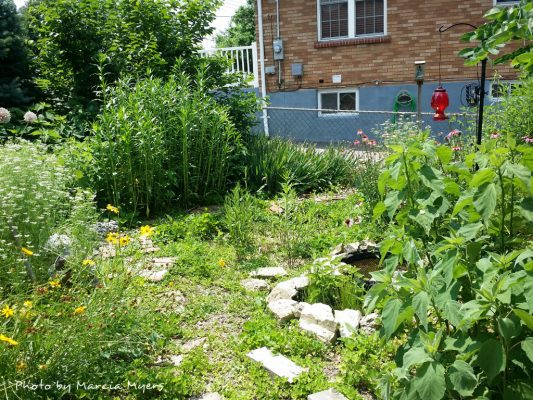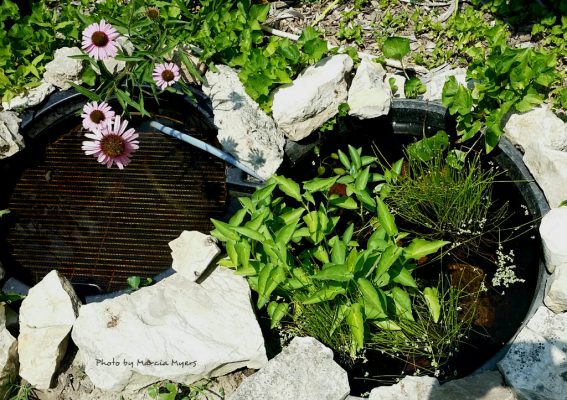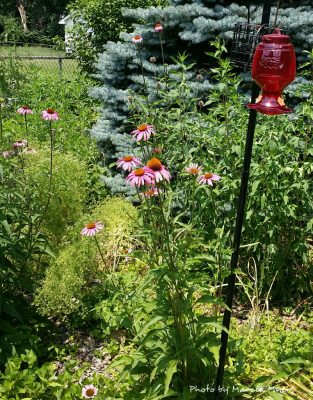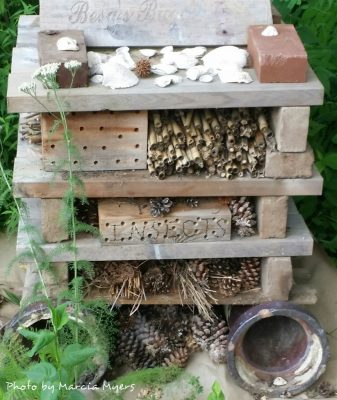By Besa Schweitzer
Horticulturalist at Missouri Botanical Garden
Using these practical tips will make your home garden shine!
Design:
Learn about garden design and use of hardscape:
- Flagstone pathways
- Boulders
- Retaining walls
- Stonework
- Brick
Consider:
- Contrast of texture
- Flower color for spring, summer, and fall
- Varying plant height
- Use of evergreens
- Placement of appropriate sculpture
- Path work
- Seating areas
- Fencing
- Screening
Native Plant School is a great place to learn.
Try to fit your garden style to your neighborhood. Your neighbors will appreciate a garden that supports a cohesive community.
Keep some lawn. I recommend removing less than 200 square feet or one quarter of your lawn (whichever is greater) and replacing with native gardens, shrubs, or a rain garden.
Beware of starting a garden from seed. Seeded landscapes are very weedy in years one and two and need to be installed by skilled individuals.
Know which native plants can reduce maintenance. Shade-loving groundcovers like golden groundsel (Senecio aureus) and little-flower alumroot (Heuchera puberula) planted in large masses can help reduce the amount of lawn. There are many other native groundcovers.
Know which native plants sucker or seed aggressively and which ones are well-behaved. Also, nurseries may not know which natives are best. That’s why we have developed our top performing native plants handout.
Keep a neat edge around garden areas. A nice looking edge gives your whole garden a professional look.
Beginning:
Start small. Expand your garden a little each year. Don’t forget to maintain your existing garden beds.
Pull up or cut down weed trees right away before they become established. Be able to identify every plant in your yard and know what is a weed.
Autumn:
Rake up leaves in the fall. Leaves blow into piles that may smother plants. Try composting them in a large bin.
Trim winter stems but keep some standing if you can because they house overwintering insects. Also, stems can be placed in a different location and left over the winter.
Winter:
Mulch garden beds in late winter with shredded leaf mulch.
Cut back dead leaves and stems in winter when they begin to look unsightly. Slowly chip away starting with the most unsightly vegetation first and by spring have all areas cut back and ready for new growth.






So helpful. Thank you.
Thanks for these reminders! I keep the front yard more tidy through the fall and winter, but leave the backyard in a more natural state to allow for overwintering critters of all kinds.
I can say that adding the path and steps in the front (the hardscape) made a really big difference in terms of the landscape looking more formal and structured, plus the steps give me a place to sit while I look for photography subjects
I agree with adding hardscape but maintenance is the key, mulch of hardwood or leaves keeps things looking kept and adding plants that bloom 3 seasons will make you n the neighbors happy . Illinois
Thanks for the hints!